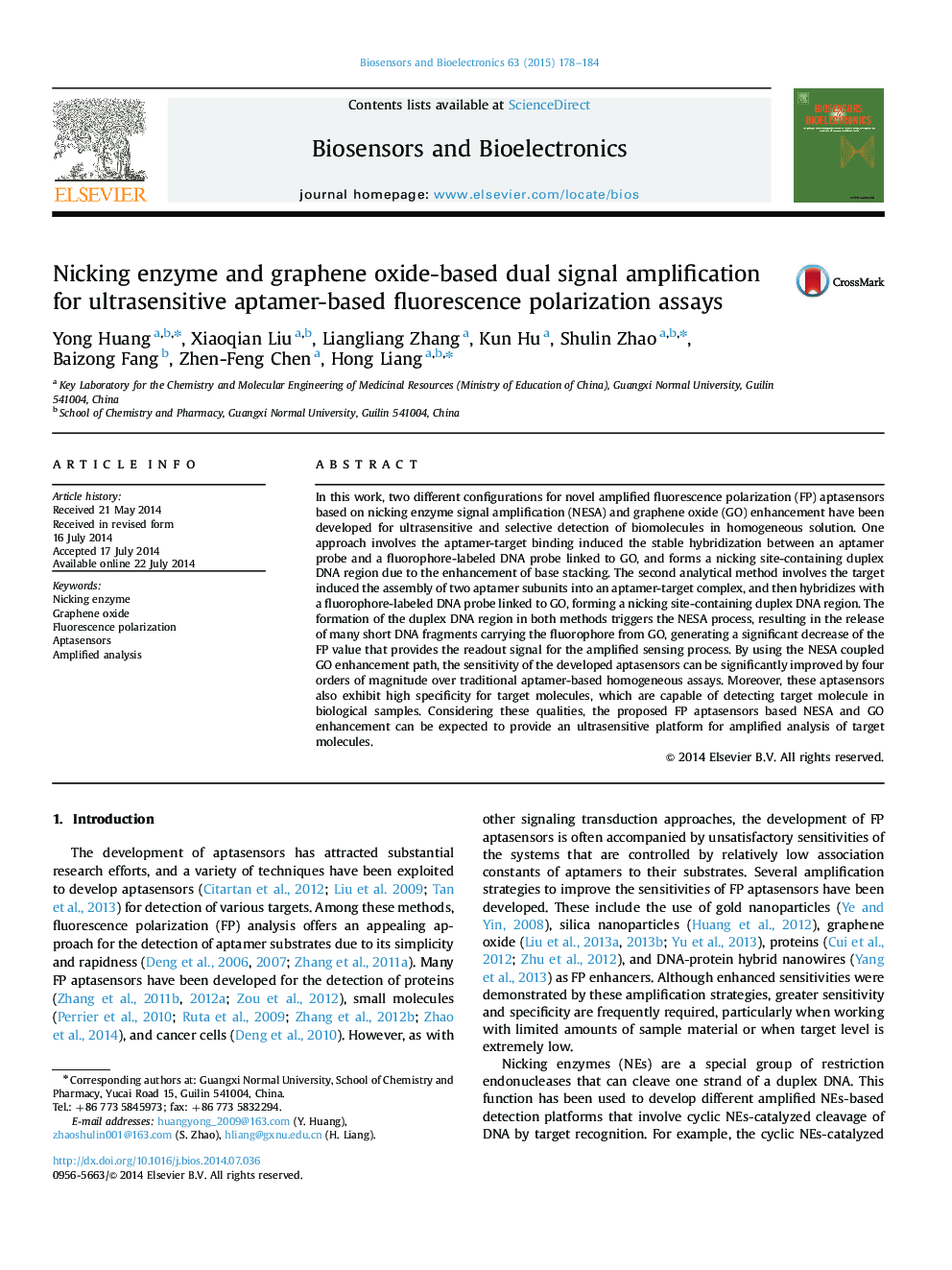| Article ID | Journal | Published Year | Pages | File Type |
|---|---|---|---|---|
| 7233041 | Biosensors and Bioelectronics | 2015 | 7 Pages |
Abstract
In this work, two different configurations for novel amplified fluorescence polarization (FP) aptasensors based on nicking enzyme signal amplification (NESA) and graphene oxide (GO) enhancement have been developed for ultrasensitive and selective detection of biomolecules in homogeneous solution. One approach involves the aptamer-target binding induced the stable hybridization between an aptamer probe and a fluorophore-labeled DNA probe linked to GO, and forms a nicking site-containing duplex DNA region due to the enhancement of base stacking. The second analytical method involves the target induced the assembly of two aptamer subunits into an aptamer-target complex, and then hybridizes with a fluorophore-labeled DNA probe linked to GO, forming a nicking site-containing duplex DNA region. The formation of the duplex DNA region in both methods triggers the NESA process, resulting in the release of many short DNA fragments carrying the fluorophore from GO, generating a significant decrease of the FP value that provides the readout signal for the amplified sensing process. By using the NESA coupled GO enhancement path, the sensitivity of the developed aptasensors can be significantly improved by four orders of magnitude over traditional aptamer-based homogeneous assays. Moreover, these aptasensors also exhibit high specificity for target molecules, which are capable of detecting target molecule in biological samples. Considering these qualities, the proposed FP aptasensors based NESA and GO enhancement can be expected to provide an ultrasensitive platform for amplified analysis of target molecules.
Related Topics
Physical Sciences and Engineering
Chemistry
Analytical Chemistry
Authors
Yong Huang, Xiaoqian Liu, Liangliang Zhang, Kun Hu, Shulin Zhao, Baizong Fang, Zhen-Feng Chen, Hong Liang,
